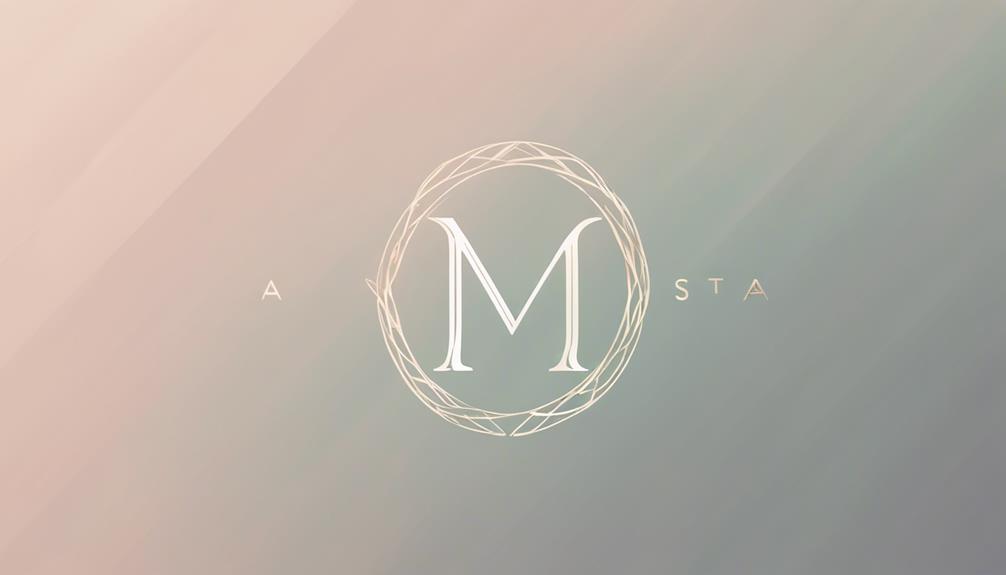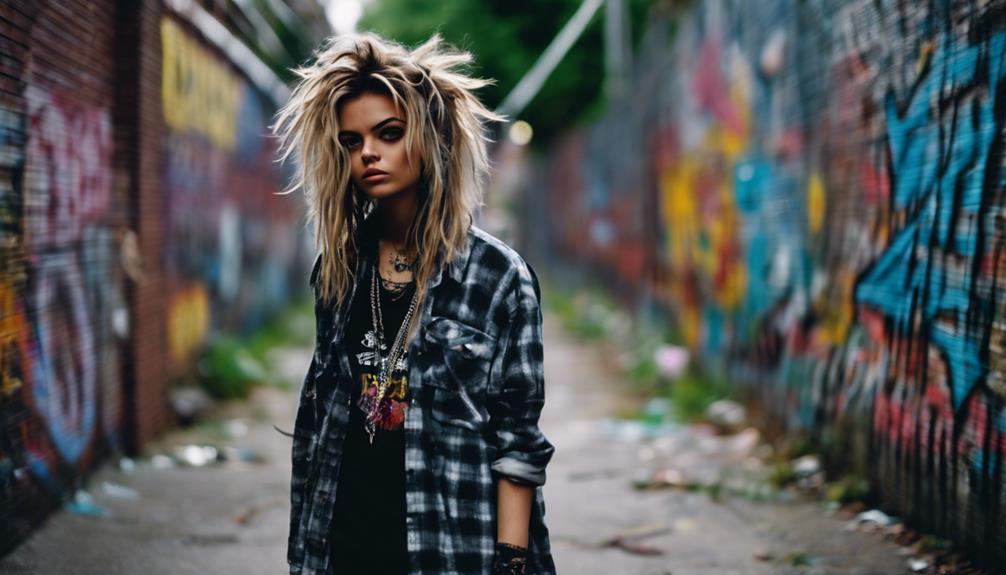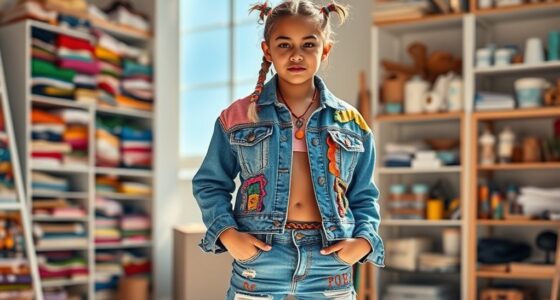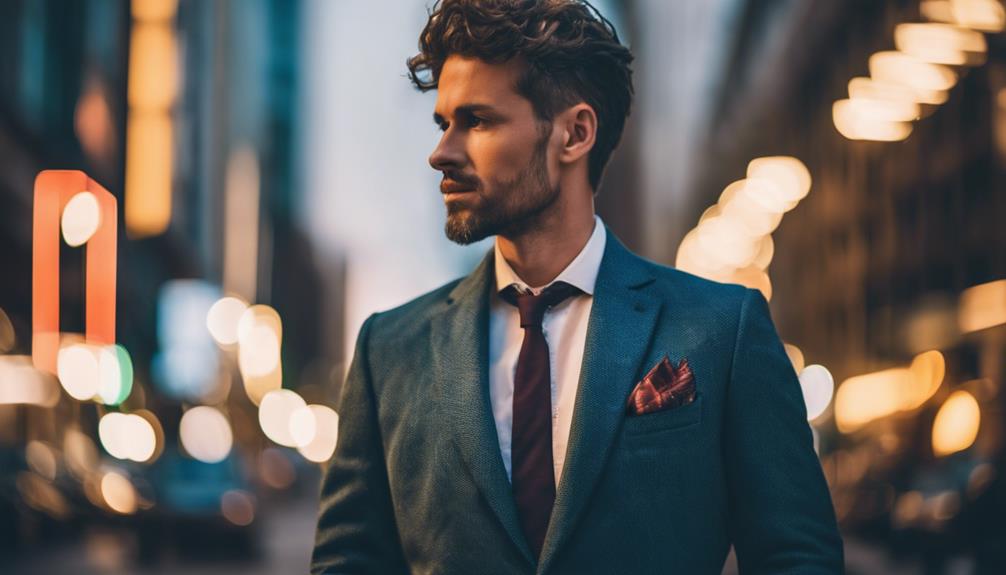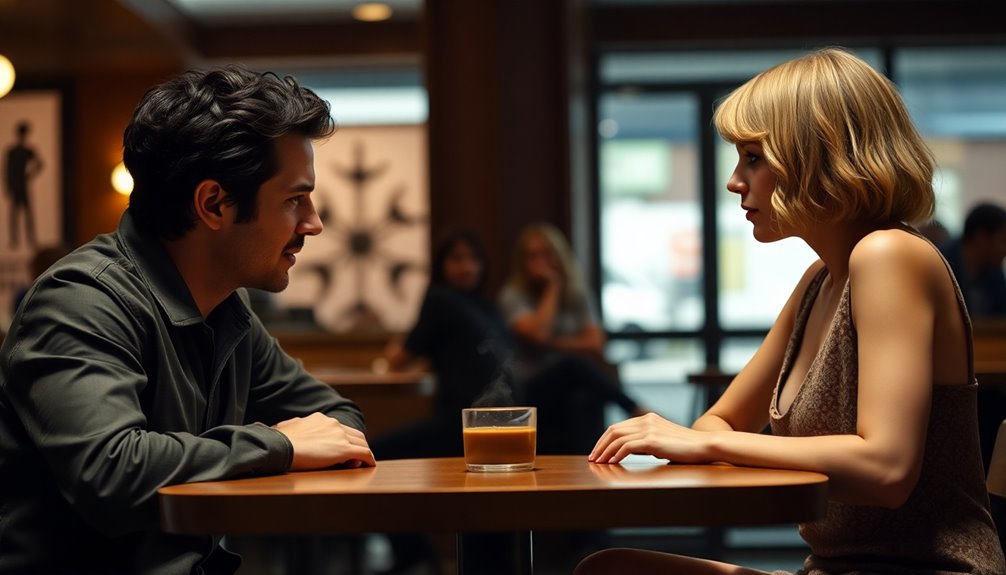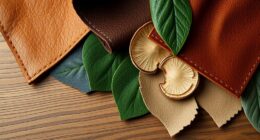Designing a stylish fashion logo is crucial for establishing your brand identity. Start by focusing on distinctive shapes and opting for a limited color scheme to make it memorable. Your logo should stay current with trends while highlighting your unique creative approach. It’s important to use materials that evoke emotions and resonate with your target audience. Don’t forget to include elements that represent cultural influences, as they can add depth to your brand narrative. By using customizable templates and AI-powered tools, creating your logo can be both enjoyable and efficient. Interested in learning more about how to enhance your logo design? Discover additional insights here!
Key Takeaways
- A fashion logo should reflect the brand's identity through signature silhouettes and unique patterns that resonate with current trends.
- Utilize a limited color palette to ensure the logo is clean, memorable, and emotionally appealing to consumers.
- Incorporate timeless statement accessories in the logo design to strengthen brand image and foster consumer connection.
- Consider using customizable templates or AI-powered logo makers for personalized design options tailored to your brand vision.
Origin and historical background of the fashion trend/style
When you explore the origin of fashion logo design, you'll notice how trends have evolved over the decades.
Cultural icons and movements have shaped these logos, making them powerful symbols of identity and expression.
Understanding this history helps you appreciate the significance of logo design in today's fashion landscape.
Fashion Trends Over Decades
Exploring fashion trends over the decades reveals how societal changes have shaped styles, from the flapper dresses of the 1920s to the fast fashion phenomenon of the 2000s.
The 1920s marked a significant shift in women's fashion, with flapper dresses and bobbed hair symbolizing newfound liberation.
Fast forward to the 1960s, and you'll see the Mod movement introduce bold colors and the iconic mini skirt, reflecting the youth counterculture's vibrancy.
As you enter the 1980s, power dressing emerges, characterized by shoulder pads and vibrant hues, showing the era's ambition and changing women's roles in the workplace.
Then, the 1990s bring grunge into the spotlight, with flannel shirts and ripped jeans representing a rebellious spirit against mainstream norms.
Cultural Icons and Movements
Cultural icons and movements have always played a crucial role in shaping fashion, reflecting the values and attitudes of their times.
For instance, the Women's Liberation Movement of the 1960s pushed boundaries with androgynous styles, influencing how you perceive gender in fashion. The punk movement of the 1970s brought a rebellious spirit, showcasing DIY ethics and political statements that resonated with youth culture.
Fast forward to the 1980s, where hip-hop culture introduced bold styles, graphic tees, and oversized silhouettes, empowering self-expression and individuality. This laid the groundwork for the rise of streetwear in the 1990s, as brands like Supreme and Stüssy blended high fashion with urban culture, redefining casual clothing and brand identity.
In contrast, late 20th-century fashion movements, such as minimalism, emphasized simplicity and functionality, reflecting a cultural shift towards sustainability and conscious consumerism.
Each of these cultural icons and fashion movements not only shaped styles but also influenced how you connect with brands, making it essential to understand their historical context in your own fashion journey.
Key Characteristics
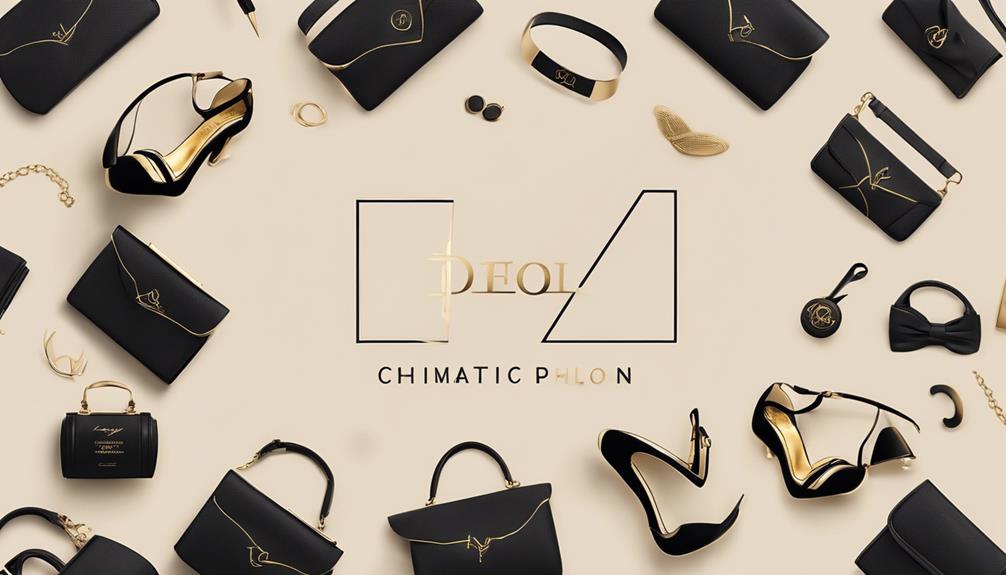
When creating a fashion logo, you'll want to focus on signature silhouettes and patterns that capture attention.
Consider how fabric types and color palettes can enhance your brand's message and appeal.
Signature Silhouettes and Patterns
Signature silhouettes and patterns in fashion logos play a crucial role in shaping brand identity and making a lasting impression on consumers.
When you choose signature silhouettes, focus on unique shapes that reflect your brand's aesthetic. These distinct contours make your logo instantly recognizable and help convey your brand's personality.
Patterns also contribute greatly to your logo design, allowing you to showcase creativity and style. Popular options like stripes, polka dots, and abstract designs can resonate with current fashion trends, adding flair to your visual identity. By incorporating these elements, you create a cohesive brand identity that enhances visual consistency across various marketing materials and products.
Moreover, a limited color palette is essential in ensuring that your signature silhouette or pattern stands out. It keeps your design clean and memorable, making it easier for consumers to connect with your brand. Unique patterns can evoke specific emotions and associations, allowing you to resonate with your target audience on a deeper level.
Fabric Types and Color Palettes
Fabric types and color palettes are vital elements in fashion design, influencing both the aesthetic and emotional appeal of a collection. When you choose fabric types, consider options like cotton for breathability, silk for luxury, and denim for durability. Each fabric affects how your designs feel and wear.
You'll also want to think about color palettes; warm tones like reds and oranges can evoke passion, while cool tones such as blues and greens can create a sense of tranquility.
Seasonal trends further shape your choices, with lighter fabrics and pastel colors often preferred in spring and richer jewel tones in fall. Additionally, color psychology plays an important role in consumer perception, impacting how your brand is viewed in the marketplace.
In today's fashion landscape, sustainability is becoming increasingly important. By opting for eco-friendly fabric types, like organic cotton and recycled polyester, you not only enhance your brand reputation but also attract environmentally conscious consumers.
Combine these sustainable choices with muted color palettes to create a collection that resonates emotionally while making a positive impact. Your selections can set the tone for your brand identity and influence consumer loyalty.
Timeless Statement Accessories
Timeless statement accessories stand out for their ability to remain stylish and relevant, no matter the changing tides of fashion trends. These pieces often boast high-quality materials and exceptional craftsmanship, ensuring they not only last but also exude a luxurious feel.
When you incorporate timeless statement accessories into your fashion business, you're fostering a strong brand identity that resonates with consumers. Unique design elements or iconic motifs serve as signature statements for your brand, making it easier for customers to recognize and remember you. This recognition is essential in logo design elements, as it links the accessory's aesthetic to your overall brand image.
Color choices for these accessories typically lean towards neutral or classic tones, allowing for versatile pairing with various outfits across seasons. By emphasizing simplicity and elegance, timeless statement accessories evoke emotional connections, imbuing sophistication and quality in your brand's narrative.
Incorporating these accessories into your collection not only enhances your offerings but also cements your brand's position in the competitive fashion landscape. They're a powerful tool for establishing a lasting connection with your audience.
Modern Interpretation
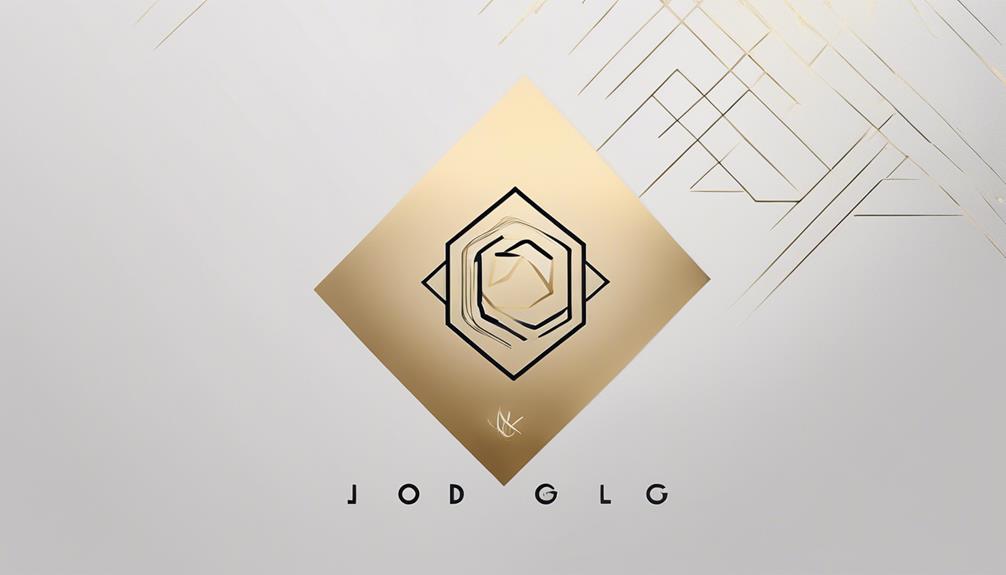
In today's fashion landscape, you're seeing a rise in sustainable innovations that challenge traditional design norms.
Luxury fashion houses are now embracing these eco-friendly practices, reflecting a shift in consumer values.
Additionally, fashion icons of the era are influencing logo designs, merging style with social consciousness to create a lasting impact.
Sustainable Fashion Innovations
Sustainable fashion innovations are transforming the industry by prioritizing eco-friendly materials and cutting-edge technologies that minimize waste and promote ethical practices. You'll notice brands increasingly using organic cotton, recycled polyester, and biodegradable fabrics to reduce their environmental impact. This shift reflects a growing consumer demand for sustainable fashion, with the global market projected to reach $8.25 billion by 2023.
Innovative techniques like 3D knitting and digital fabric printing are revolutionizing production methods. These technologies enable on-demand production, considerably cutting down waste. You can also see brands adopting circular fashion practices, which encourage recycling and upcycling. By returning old garments for reuse, you participate in a more sustainable future.
Moreover, the use of blockchain technology enhances transparency in supply chains. This allows you to trace the origins of your clothing, ensuring ethical sourcing practices. As you explore the world of sustainable fashion, you'll find that these innovations don't just benefit the planet—they also empower you as a conscious consumer, making informed choices that align with your values.
Embrace these changes, and you'll be part of a movement toward a more sustainable and stylish future.
Luxury Fashion Houses
Luxury fashion houses are redefining elegance with modern logo designs that blend minimalist aesthetics and bold creativity to capture their unique brand identities. These brands often utilize minimalist logo designs that emphasize simplicity, allowing their logos to convey sophistication and exclusivity.
By focusing on classic typography, luxury labels evoke a sense of heritage and high status, often featuring timeless fonts, simple monograms, or wordmarks that resonate with their affluent clientele.
Color palettes play a vital role in this modern interpretation. Luxury fashion houses typically opt for neutral tones, like black, white, and gold, which reflect opulence and are culturally associated with luxury and refinement. This strategic use of color enhances the visual impact of their logos, making them instantly recognizable.
Additionally, some luxury logos incorporate abstract shapes or unique symbols, providing a contemporary edge while still maintaining a connection to tradition. The choice of high-quality materials in branding—such as embossed logos—further enhances the perceived value of these fashion houses.
Fashion Icons of the Era
Modern fashion icons like Rihanna and Virgil Abloh are transforming brand identities by fusing high fashion with streetwear, creating logo designs that resonate with urban culture and individuality. Their innovative approach has enabled brands like Off-White to utilize distinctive logos and playful elements, such as quotation marks, enhancing recognition and appeal among contemporary consumers.
In contrast, minimalist logos from luxury brands like Balenciaga reflect a demand for clean lines and simple typography, aligning with the sophisticated tastes of today's audience. This simplicity speaks to a broader trend where less is more, and elegance prevails.
Sustainable fashion icons, such as Stella McCartney, take it a step further by integrating eco-friendly themes into their brand identity. Their logos not only communicate style but also a commitment to environmental responsibility, aligning with the values of socially-conscious consumers.
Moreover, the digital age has empowered stars like Kim Kardashian to leverage social media, crafting adaptable logo designs that cater to a digital-first audience. These bold visuals enhance brand visibility and connect directly with a contemporary consumer base, showcasing how modern interpretations of fashion icons continue to shape the industry.
Styling Tips
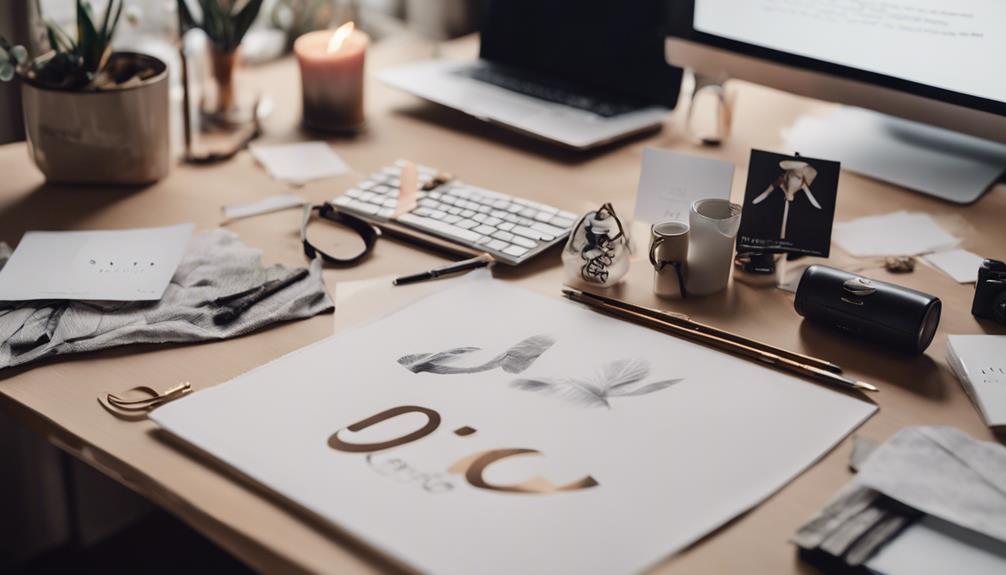
When styling your wardrobe, think about versatile layering pieces that can adapt to different looks.
Seasonal essentials are key to keeping your outfits fresh and relevant, while color and pattern coordination can elevate your overall appeal.
Let's explore how these elements can transform your fashion game.
Versatile Layering Pieces
Versatile layering pieces like cardigans and lightweight jackets elevate your wardrobe, allowing you to mix and match effortlessly across seasons. To create a logo for your personal style that reflects a good fashion logo, think about the neutral colors in your layering pieces. These tones will help you build a cohesive wardrobe that pairs well with various outfits.
Incorporating textures like knits, denim, and chiffon into your layering can add depth and visual interest while keeping you comfortable. When styling, don't forget to vary lengths and silhouettes. This technique creates a balanced and dynamic appearance, preventing bulkiness in your look.
Accessories play an important role too. Adding a belt or statement jewelry can personalize your layered outfits, showcasing your unique style. Remember, the right combination of layering pieces not only enhances your outfit but also reflects your fashion identity.
Just like a well-designed logo, your style should convey a message—be bold, be confident, and let your layering choices speak for you. So, when you aim to create a logo for your wardrobe, focus on those versatile layering pieces that define your fashion essence.
Seasonal Wardrobe Essentials
To stay stylish year-round, focus on building a collection of seasonal wardrobe essentials that can be mixed and matched effortlessly. Invest in quality basics like white tees and denim jeans, as they serve as a solid foundation for countless outfits. For spring, consider adding versatile trench coats, which can be layered in various ways to create diverse looks.
Incorporate seasonal colors into your wardrobe—think earthy tones for fall and soft pastels for spring. These colors not only keep your style fresh but also align with the trends of each season. To elevate your outfits, don't shy away from statement accessories like bold scarves or chunky jewelry; they can transform even the simplest looks into something special.
When selecting fabrics, remember that breathability is key for summer. Opt for lightweight materials like linen, while heavier fabrics like wool are perfect for winter layering. By curating these essentials, you'll create a stylish brand identity that reflects your personal fashion style.
With the right pieces in your closet, you can easily adapt your look, making you ready for any occasion or season.
Color and Pattern Coordination
Building a stylish wardrobe requires not only selecting the right pieces but also mastering color and pattern coordination to create cohesive looks that reflect your personal style.
Start by limiting your color palette to 1-2 colors. This simplicity enhances brand recognition and keeps your outfits grounded. Remember the psychological impact of colors; for example, blue can evoke trust, while red signifies passion. Choose hues that resonate with your target audience.
When it comes to patterns, think subtlety. Patterns can add depth to your wardrobe, but overwhelming designs can distract from your brand message. Opt for patterns that align with current fashion trends and appeal to your audience's preferences. Use contrasting colors to make your outfits pop, ensuring they remain legible and stylish in various settings.
Lastly, always consider the context in which you wear these pieces. Your color and pattern choices should reflect not only your personality but also the message you want to convey. By coordinating colors and patterns effectively, you'll create a cohesive brand identity that speaks volumes about your style and resonates with those around you.
Shopping Guide
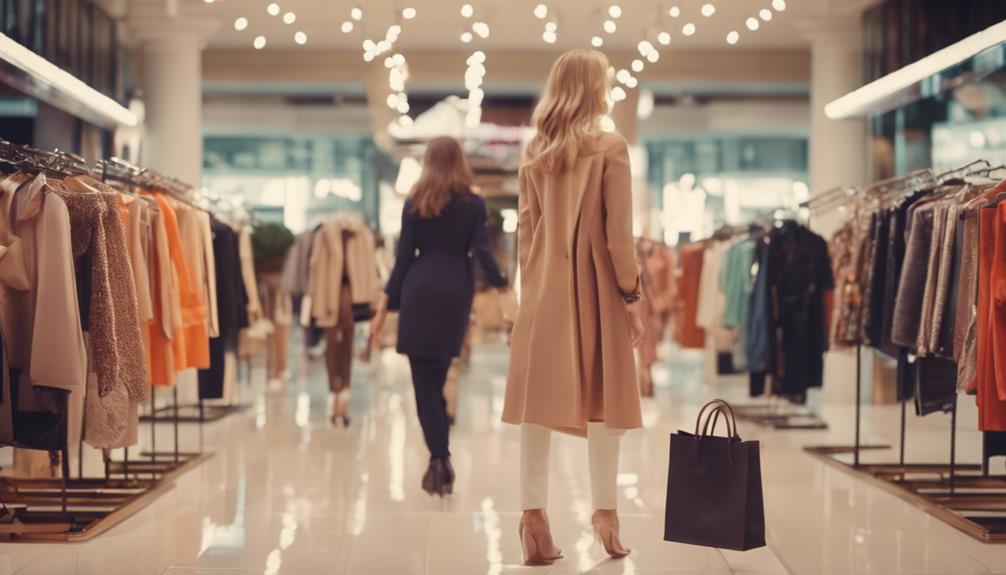
Finding the perfect logo for your fashion brand can be an exciting yet challenging journey that sets the tone for your entire identity. To streamline this process, consider using a logo maker trusted by industry professionals. These tools can help you create a fashion logo that stands out while remaining simple and memorable.
Start by exploring various logo ideas tailored to the fashion industry. Look for templates that allow you to customize fonts, colors, and symbols so that your logo reflects your brand's unique personality. Stick to a limited color palette of 1-2 colors; this not only enhances brand recall but also conveys the right emotional response.
Utilizing an AI-powered fashion logo maker can greatly speed up your design process, providing you with instant access to custom options.
Once you've created your logo, visualize it across different products—like business cards, clothing, and packaging—to guarantee it maintains its impact and aesthetic.
Upcycling Fashion Items
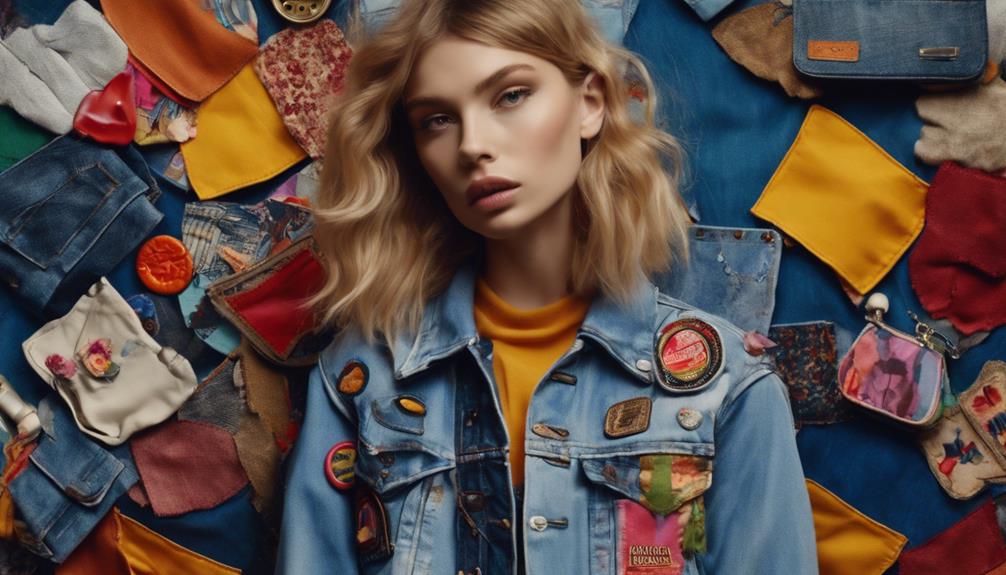
Upcycling old clothing is a fantastic way to breathe new life into your wardrobe while expressing your unique style.
You can transform discarded pieces into something fresh and fashionable through simple DIY techniques.
Upcycling Old Clothing Techniques
Transforming discarded garments into unique fashion pieces not only showcases your creativity but also contributes to a more sustainable future in the fashion industry. Upcycling is a powerful technique that allows you to breathe new life into old clothing, reducing waste while promoting sustainability. You can explore various methods like sewing, dyeing, and embellishing to create fashion items that reflect your personal style.
By engaging in upcycling, you become part of a movement that diverts over 92 million tons of textile waste from landfills annually, as highlighted by the Ellen MacArthur Foundation. The rise of DIY culture, bolstered by online tutorials, has made these techniques accessible to everyone, inspiring many to share their unique designs on social media.
When you upcycle, you're not just creating; you're making a statement. Your fashion logos can reflect this commitment to sustainability, allowing your brand to resonate with consumers who value individuality and eco-friendly practices.
Embrace the art of upcycling, and you'll not only develop a stylish brand identity but also play a crucial role in shaping a more sustainable fashion landscape.
DIY Fashion Item Transformations
Creative DIY fashion item transformations allow you to turn your old garments into stunning, personalized pieces that stand out in any wardrobe. Upcycling fashion items not only reduces waste but also promotes sustainability, making your fashion choices more eco-friendly. By repurposing clothes you no longer wear, you can create unique stylish items that reflect your personal style.
You can explore various techniques for upcycling, such as sewing, dyeing, or adding embroidery and embellishments. These methods enable you to breathe new life into basic clothing, transforming them into eye-catching pieces. Plus, DIY upcycling can save you money while providing a creative outlet to express yourself.
Online platforms and communities are brimming with tutorials and inspiration for upcycling projects. This shared knowledge encourages a culture of creativity, where you can learn from others and showcase your unique creations.
As you immerse yourself in the world of DIY fashion item transformations, you're not just making a statement with your wardrobe; you're also contributing to a more sustainable future in fashion. So grab those neglected garments, unleash your creativity, and start your upcycling journey today!
Cultural Impact
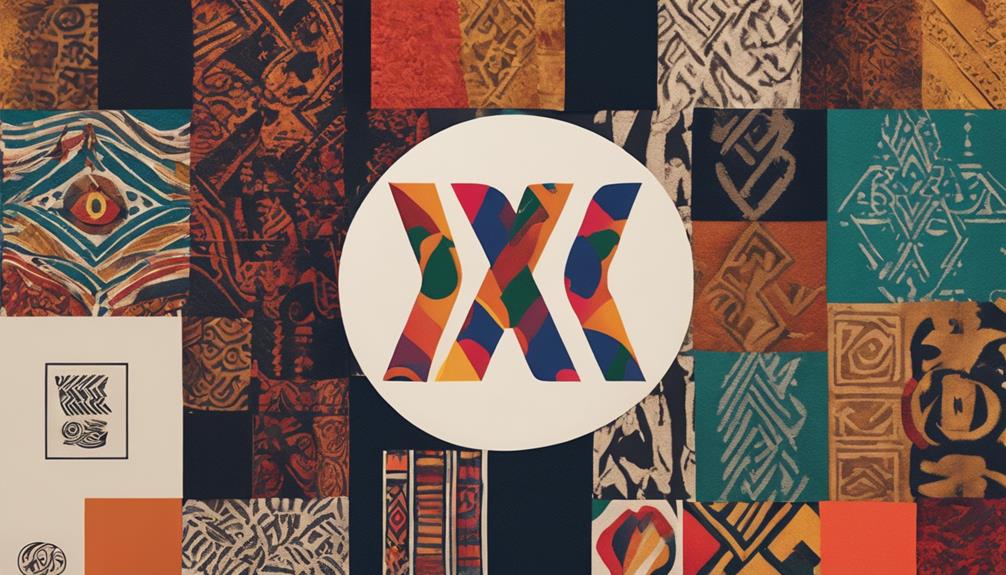
Fashion logos aren't just about branding; they're powerful symbols that often appear in music videos, shaping cultural narratives.
You'll notice how logos can amplify activism, making statements that resonate with your values and beliefs.
As you explore these connections, think about how logos influence your understanding of culture and identity.
Fashion in Music Videos
Music videos create a dynamic platform where artists showcase trends that not only captivate audiences but also shape consumer behavior. When you watch a video featuring icons like Beyoncé or Rihanna, you're not just enjoying the music; you're witnessing fashion designs that can define a brand's personality. These artists collaborate with high-end designers, making their visuals a launching pad for new styles and trends.
Consider the impact of classic videos like Michael Jackson's 'Thriller' or Madonna's 'Vogue'—both set fashion trends that have echoed through the years. As you explore these visuals, you'll notice how they influence what you wear and how you express yourself. Recent studies indicate that fashion featured in music videos can boost social media mentions of those brands by 25%, highlighting the power of these collaborations.
When creating your fashion, remember that music videos often reflect societal changes, from the glam rock of the '80s to today's hip-hop streetwear. Embrace this cultural phenomenon and let it inspire your style, as you recognize the profound connection between music, fashion, and consumer behavior.
Fashion's Role in Activism
As you explore the intersection of style and social issues, you'll find that many designers leverage their platforms to advocate for change and raise awareness about pressing societal concerns. Fashion's role in activism has never been more pronounced, with collections often addressing critical topics like gender equality and climate change.
The 'Fashion Revolution' movement, ignited by the Rana Plaza disaster in 2013, urges consumers to demand transparency and consider the origins of their clothing.
High-profile events, such as the Met Gala, transform runways into stages for activism, showcasing themes that highlight social issues. In 2020, the #BlackLivesMatter movement prompted numerous fashion brands to commit to anti-racism initiatives, revealing the industry's growing engagement in social justice.
Moreover, sustainable fashion is on the rise, as consumers become more aware of the environmental impact of their choices. Brands that prioritize eco-friendly practices not only enhance their logos but also align their identities with a more responsible ethos.
Frequently Asked Questions
How Do You Create a Brand Identity for a Clothing Brand?
To create a brand identity for your clothing line, define your mission and values, research the market, develop a cohesive visual identity, establish a consistent brand voice, and engage your audience through storytelling and connection.
How Do I Make a Good Fashion Brand Logo?
To make a good fashion brand logo, start by defining your brand's essence. Use an AI logo maker for tailored designs, choose simple colors, select unique typography, and test with your audience for valuable feedback.
How Do I Make My Logo Look Like a Brand?
To make your logo look like a brand, focus on simplicity and memorability. Choose a consistent color palette, select readable typography, and incorporate relevant symbols that resonate with your target audience for effective brand recognition.
What Is Brand Identity in Fashion?
Brand identity in fashion's all about the visual elements and personality that set your brand apart. It influences how consumers perceive you, connects them emotionally, and builds loyalty through consistent recognition across all platforms.
How Can I Incorporate Bold Styles into my Fashion Logo Design?
When creating a fashion logo design, consider incorporating emo fashion styles express yourself. Play with dark colors, bold typography, and edgy graphics to capture the essence of the emo fashion movement. Use these elements to convey a sense of individuality, rebellion, and self-expression in your logo design.
Conclusion
Incorporating a stylish logo into your fashion brand identity can transform your presence in the industry.
By understanding the historical roots and key characteristics of fashion trends, you can create a modern interpretation that resonates with your audience.
Use our styling tips and shopping guide to elevate your looks, and consider upcycling to make a statement.
Remember, your logo isn't just a design; it's a reflection of your brand's cultural impact and vision. Embrace it!
